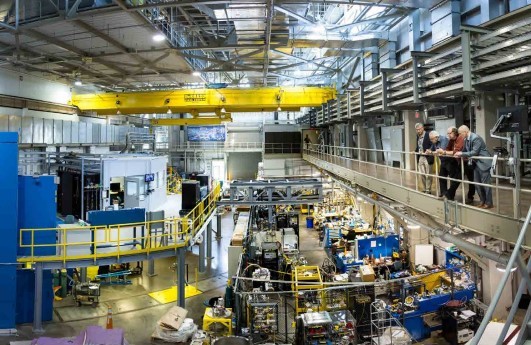An Interview with Dr. Alan A. Tennant Lead of the Quantum Materials Initiative at Oak Ridge National Laboratory
- 13 Jan 2022
- Volume 22
- NANOscientific Magazine, Summer 2021
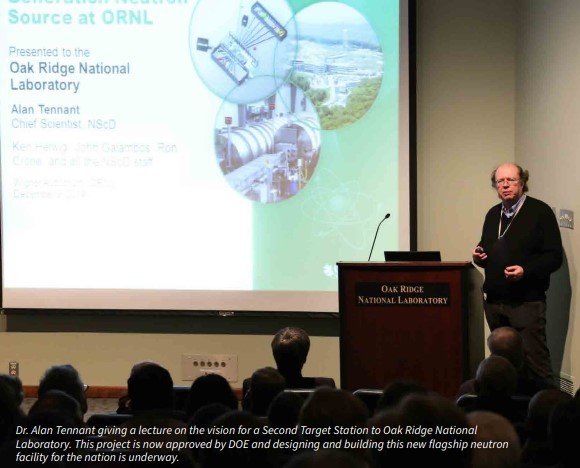
Director, Dr. Alan Tennant
Alan Tennant is the Lead of the Quantum Materials Initiative at Oak Ridge National Laboratory, and Joint Faculty Professor in the Department of Physics and Astronomy at the University of Tennessee. Before conducting postdoctoral research at ORNL in the late 1990s, Tennant studied physics at the University of Edinburgh, Scotland, and earned his PhD at the University of Oxford. He served as a professor at the Technical University, Berlin, and institute director in the field of magnetism at the Helmholtz Center Berlin. During nine years in Berlin, he was science director of the Berlin Neutron Scattering Center and undertook research on exotic states of matter, including the observation of “nature’s ultimate symmetry,” the E8 symmetry, in a material using neutrons. He received the Euro physics Prize for the experimental observation of magnetic monopoles in spin ice in 2012. Tennant returned to ORNL in November 2013 as Chief Scientist in the Neutron Sciences Directorate.
As the lead at the lab wide quantum materials initiative at ORNL, Dr. Tennant is principal investigator on an initiative to develop capabilities for measuring quantum properties in materials. Other activities include developing machine learning/AI approaches for understanding quantum and topological materials and the prediction and synthesis of new quantum materials for energy and quantum information science. Dr. Tennant has over 25 years of experience in quantum condensed matter and magnetism research and 15 years of experience in science management and has directed major international scientific user facilities and renowned research institutes. He has extensive expertise in national research planning and international collaborations and has held academic positions in the UK and Germany as well as positions in national laboratories in the UK, US, and Germany. He has authored over 100 scientific papers and received prestigious research awards including the 2012 European Physics Prize for Condensed Matter. His main research areas are application of neutrons and photons to understanding quantum materials and the use of advanced modelling and analysis including machine learning/AI to quantum and topological materials.
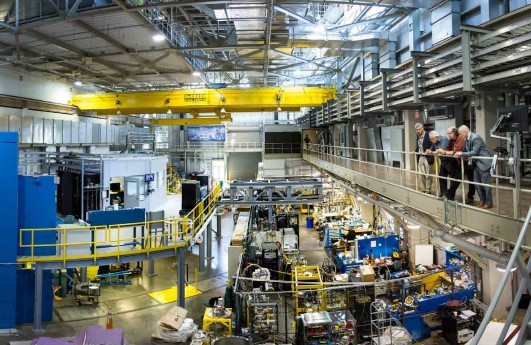
Above picture shows inside the experimental hall of the First Target Station at the Spallation Neutron Source. Dr. Alan Tennant pictured with John Galambos from the accelerator division (left), Bill Stirling from the ORNL Neutron Advisory Board and ex director of ESRF and ILL facilities in Grenoble (second from left), and Paul Langan (right) who was the Associate Laboratory Director for Neutrons at ORNL
Q&A with Dr. Alan Tennant
1) Neutron Scattering is an emerging branch of Physics which you have been involved in since the beginning. Can you explain why Neutrons are so important in quantum materials?
Neutron scattering dates back to the 1940s using the first reactors built for the Manhattan Project but has really exploded in terms of application to quantum properties of materials in the last two decades. This is because of the new sources and instrumentation that make the measurements possible. Neutrons are quite an amazing probe of quantum states because of the way they “see” the atomic spins. Magnetism comes about because of the Pauli exclusion principle; electrons can’t be in the same state at the same time so become correlated, adopting shared configurations in space and time. Neutrons scatter off these states and reveal what you can think of as a kind of “quantum dance”.
2) How significant are new supercomputers to understand more about quantum science?
I think they are very significant. The reason is they offer a new level of understanding, particularly when combined with new algorithms and artificial intelligence in the way complex materials can be simulated. Many of the materials challenges we face, the experimental data, and quantum states are challenging. Having tools that can address this is important for progress.
3) How does the development of topological semimetals discovered by Quantum Physics affect the ability to advance Quantum computing?
Topological semimetals are part of a wider class of topological materials that include superconductors and insulators. Some topological semimetals such as Weyl semimetals are of interest in low power electronics due to their fast dissipationless transport. However, for quantum computing people are particularly interested in so called non-Abelian anyons found in other types of materials. These are quasiparticles that can be used to do quantum operations. You can potentially get them in topological superconductors and quantum spin liquids. There is still so much still to be discovered and understood in topological materials that I feel we are still at the start.
4) You said in our interview that “A lot is happening in quantum materials that will have an incredible influence on physics”. Can you elaborate on that?
I think that from the explorations that have been happening to date, which have often been on the simple model systems we think we can understand, there have been enough surprising new findings and insights that we can speculate that there is a lot of undiscovered physics out there. As our experiments and theory get better and better, more and more science is coming into range and these discoveries will change the way we look at materials and quantum states. There are a lot of connections between the models we use in condensed matter and those in other branches of physics like high energy physics so a synergy is happening between disciplines including new ideas coming from quantum information science itself.
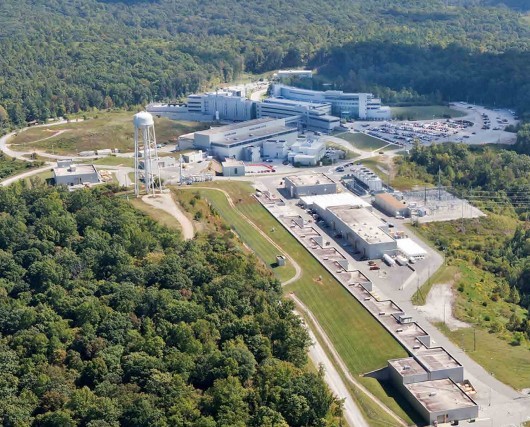
Above: Ariel view of the Spallation Neutron Source complex.
5) You mentioned that “Quantum brings a signature of the quantum state, when observing quantum systems, you cannot see everything”. Is the research ORNL Quantum Materials Initiative leading towards discoveries to see more at the quantum level and how will that affect our understanding of materials?
The ORNL quantum materials initiative has really been focused on jump starting some new quantum research at the laboratory and helped prepare the ground for the Quantum Science Center, one of five new national quantum centers established though the National Quantum Initiative Act. The Quantum Science Center at ORNL focuses on challenges involving topological quantum information and the materials needed for it. Being able to measure what is going on is a big part of this and we are doing a lot of new work from the use of quantum sensors to measure what is happening in a material to the application of new measurement protocols inspired by quantum information science to probes like neutron to quantify quantum entanglement. This innovation is driven by the need to find new ways to expose the underlying states so we can harness and improve them in materials.
The Shull Wollan Center has a three-fold mission: science incubator, portal for industry, and training and education. Research groups explore biophysics of membranes, glasses and disorder, quantum magnets, theory and highperformance computing, as well as neutrino and neutron physics.
6) You are Director of the Shull Wollan Center, which is a purpose-built institute co-located with the Spallation Neutron Source, Center for Nanophase Materials Science on the ORNL campus supporting over 100 researchers at any given time. How important do you think global & interdisciplinary collaboration is for the future of quantum science?
Shull Wollan Center is an interdisciplinary research institute. It provides labs and interactive spaces for researchers studying a wide range of science problems. It hosts fundamental physics experiments looking at the origins of matter in the universe; biology experiments on proteins and membranes; complex behavior in liquids and glasses; experiments in extreme conditions, to name a few. Of course quantum science is an important part of what we do. It’s definitely the case that global and interdisciplinary collaborations are important. Many of the challenges need a range of researchers with special expertise to address them. I like to think this is a reason the center exists. We need places now where researchers can get together and explore and solve important problems. By having the Shull Wollan Center sited near Department of Energy’s two neutron sources researchers have a chance to come and do really unique work.
Neutron Scattering Science at Oak Ridge National Laboratory
Neutrons are abundant in the universe making up more than half of the visible matter. Neutron scattering provides information about the positions, motions, and magnetic properties of materials. When a beam of neutrons is aimed at a sample, many neutrons will pass through the material. But some will interact directly with atomic nuclei and “bounce” away at an angle, like colliding balls in a game of pool. This behavior is called neutron scattering.
Neutrons are nondestructive and highly penetrating, which makes it possible to study things like polymers, proteins and other biological materials, and mechanical components in real time and in real-world environments without destroying them. Using special detectors, scientists count scattered neutrons, measure their energies and the angles at which they scatter, and map their final position. This makes it possible for scientists to glean details about the nature of materials ranging from liquid crystals to superconducting ceramics, from proteins to plastics, and from metals to metallic glass magnets. A partial list of materials and characteristics that neutrons can probe and measure includes: residual stress, weld quality, magnetic materials, biological processes/structures, drugtarget interactions, quantum materials / phenomena, catalysis / chemical processes, internal deviations from design specs, extreme temperature / pressure performance, internal chemical / mechanical processes, microelectronics / data storage. Neutrons provide the ability to look at quantum states of matter in unrivaled detail. Using quantum magnets in conjunction with magnetic fields exotic phases of matter can be generated that are highly quantum entangled. The wave functions in these states can be probed in space and time and in quantum critical states in particular elaborate symmetries and strange properties like fractional quantum numbers are revealed.
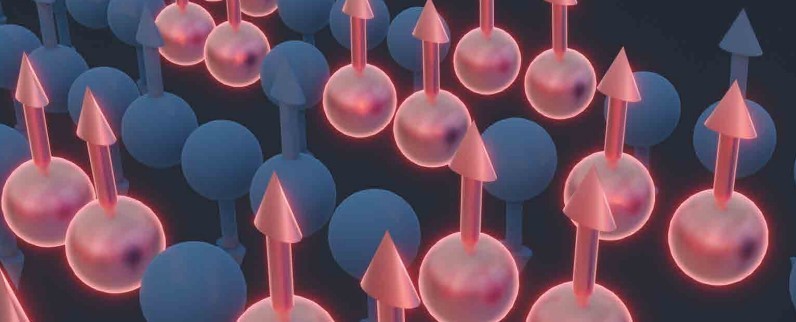
The team simulated a single spin chain’s KPZ behavior, then observed the phenomenon experimentally in multiple spin chains. Credit: Michelle Lehman/ORNL, U.S. Dept. of Energy
Quantum Materials to Revolutionize Every Aspect of Society
Quantum materials have unusual magnetic and electrical properties that, if understood and controlled, could revolutionize virtually every aspect of society and enable highly energy-efficient electrical systems and faster, more accurate electronic devices. Quantum materials include systems based on metals, oxides, and organics which have a range of potential applications including magnetic field sensors, lowpower memory modules, high-density storage devices, and quantum computers. Quantum materials are also important components of the infrastructure for energy-related technologies. Quantum materials research focuses on designing and synthesizing energyefficient, revolutionary new forms of matter that have specific, tailored properties; understanding and controlling complex, atomic- and subatomic-level interactions of magnetic and electrical properties in materials and understanding how complex phenomena emerge from simple ingredients.
Engineering New Quantum Defects
The quantum materials research at ORNL includes an active effort on how to model quantum defects in solids to help guide the development of next-generation scalable quantum systems. Through ab initio calculations and new theoretical methods, they are working towards "artificial atoms" with desired quantum properties that advance artificial quantum coherent systems. An enhanced understanding of the laws of quantum mechanics is enabling a quantum revolution that promises to transform a vast range of technologies. Oak Ridge National Laboratory is leading the way by hosting a multidisciplinary team of world-renowned researchers, including partners from major corporations, universities, and other national laboratories. Using diverse capabilities and a theory-driven understanding of the quantum world, ORNL scientists are conducting a wide variety of quantum research efforts, from developing and benchmarking scalable, fault-tolerant algorithms to designing quantum sensors. Other projects focus on synthesizing and characterizing superconducting and topological materials, as well as engineering the most promising candidates as quantumclassical systems for next-generation computing, sensing, and networking.
USING DIVERSE CAPABILITIES AND A THEORY-DRIVEN UNDERSTANDING OF THE QUANTUM WORLD, ORNL SCIENTISTS ARE CONDUCTING A WIDE VARIETY OF QUANTUM RESEARCH EFFORTS, FROM DEVELOPING AND BENCHMARKING SCALABLE, FAULT-TOLERANT ALGORITHMS TO DESIGNING QUANTUM SENSORS.
Breaking News: Quantum material’s subtle spin behavior proves theoretical predictions
Using complementary computing calculations and neutron scattering techniques, researchers from the Department of Energy’s Oak Ridge and Lawrence Berkeley national laboratories and the University of California, Berkeley, discovered the existence of an elusive type of spin dynamics in a quantum mechanical system.
The team successfully simulated and measured how magnetic particles called spins can exhibit a type of motion known as Kardar-Parisi-Zhang, or KPZ, in solid materials at various temperatures. Until now, scientists had not found evidence of this particular phenomenon outside of soft matter and other classical materials.
These findings, published in Nature Physics, show that the KPZ scenario accurately describes the changes in time of spin chains — linear channels of spins that interact with one another but largely ignore the surrounding environment — in certain quantum materials, confirming a previously unproven hypothesis.
“Seeing this kind of behavior was surprising, because this is one of the oldest problems in the quantum physics community, and spin chains are one of the key foundations of quantum mechanics,” said Alan Tennant, who leads a project on quantum magnets at the Quantum Science Center, or QSC, headquartered at ORNL.
